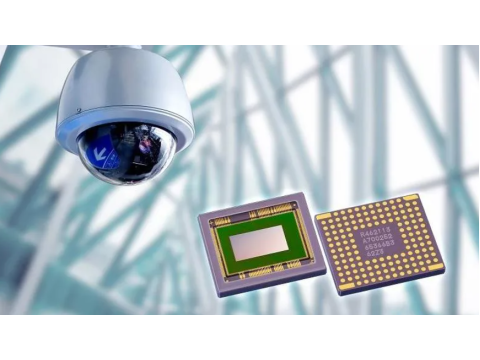Overview of Camera Sensors
The sensor (matrix) in a surveillance camera plays a pivotal role in determining key characteristics such as:
- Resolution
- Sensitivity to light
- Noise levels
Sensors come in two primary technologies:
- CCD (Charge-Coupled Device)
- CMOS (Complementary Metal-Oxide-Semiconductor)
How Sensors Work
All sensors consist of a grid of light-sensitive pixels mounted on a semiconductor plate.
Process:
- Pixels capture light and convert it into an electrical charge.
- This charge is processed differently depending on the sensor type:
CCD Sensors
- Application: Common in analog cameras.
- Working Principle: Charges move sequentially through the sensor and convert to voltage outside the chip.
- Advantages:
- Entire pixel area captures light, offering high sensitivity.
- Minimal electronic interference leads to low noise levels.
- Use Case: Ideal for environments requiring superior image clarity in low light.
CMOS Sensors
- Application: Standard in digital and IP cameras.
- Working Principle: Converts charges to signals directly at each pixel.
- Advantages:
- Supports instant digital signal processing.
- Lower power consumption and cost-effective production.
- Perfect for IP camera designs.
- Limitations:
- Less sensitive to light due to reduced effective pixel area.
- Increased noise levels due to integrated electronic components.
Note: Advancements such as APS and ACS technologies have improved CMOS sensor light sensitivity.
Color Image Sensors
To achieve color reproduction, sensors split light into three primary colors:
- Red (R)
- Green (G)
- Blue (B)
Color filters on pixels enable this, but the process reduces overall sensitivity compared to monochrome cameras.
CCD vs. CMOS: Quick Comparison
| Feature | CCD | CMOS |
|---|---|---|
| Light Sensitivity | Higher | Lower |
| Noise Levels | Minimal | Higher |
| Energy Efficiency | Higher consumption | Lower consumption |
| Cost | More expensive | More affordable |
Key Takeaways
- CCD Sensors: Better suited for applications requiring high sensitivity and low noise (e.g., low-light environments).
- CMOS Sensors: Ideal for cost-effective solutions and IP cameras with digital functionality.
- Monochrome Sensors: Offer greater sensitivity compared to color sensors.
When selecting a surveillance camera, rely on manufacturer specifications for resolution, sensitivity, and other performance metrics rather than solely focusing on sensor type. Both CCD and CMOS technologies have their place depending on the use case.

